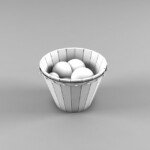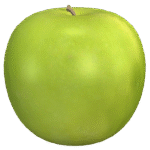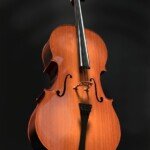Core Accuracy: How CNC Milling Innovates Metal Products
In the demanding modern world of manufacturing, achieving absolute accuracy and repeatability in metal parts is not commercially acceptable. From aerospace turbines to medical implants, the integrity of countless products depends on the perfect component manufacturing. This is the location of CNC (Computer Numerical Control) milling as the cornerstone technology. It is not only a machining process, but also a complex symphony of digital design, high torque mechanics and computer-guided accuracy that can shape the raw metal into complex, highly tolerant parts with significant efficiency.
Mysterious CNC milling: From digital blueprints to physical parts
In essence, CNC milling is a subtraction manufacturing process. Secure the solid blocks (or billets) of the material to the table. A multi-point rotation cutting tool guided by precise computer instructions moves over multiple axes to selectively engrave the material, converting the block into the desired portion.
The magic is "CNC" aspect. Unlike manual milling where the operator physically controls the motion, CNC milling relies on pre-programmed software (usually generated from 3D CAD models using CAM software). This number "recipe" Determines every nuance in the tool path:
- Tool selection: Choose the best cutter based on material and function (End Mill, Face Mill, Drill, etc.).
- Speed and feed rate: Accurately control the rotation speed (RPM) of the tool and its movement speed through the material (feed rate).
- Motion path: Build precise x, y, z (and more) to coordinate the tool to create complex contours, pockets, slots, holes and surfaces.
- Cutting depth: Determine the depth between the tool and the material passed each time.
This digitalization ensures unparalleled consistency: the first part is the same as one thousandth.
Why CNC milling ruled metal parts supreme
It is not accidental to use CNC milling for metal manufacturing. Its advantages are profound:
- Excellent accuracy and tight tolerances: CNC machines always achieve tolerances within a thousandth of an inch (even microns in high-precision settings), exceeding manual functionality. This is essential for the need for perfect parts or aerodynamic/hydrodynamic surfaces.
- Excellent repeatability and consistency: Once the program is verified, each subsequent section is nearly fixed, eliminating human errors and ensuring component interchangeability in components.
- Complex geometric shapes make it possible: Modern CNC mills, especially multi-axis machines, can produce complex shapes, undercuts and complex 3D profiles, while traditional machining or casting would be impossible or expensive.
- Improve efficiency and speed: Compared to manual operations, automation allows machines to be unattended for hours, greatly reducing labor costs and accelerating production cycles.
- Material versatility: Although famous for metals (aluminum, steel, stainless steel, titanium, brass, copper alloys), CNC mills also effectively deal with engineering plastics and composites.
- Scalability: CNC programs can be archived and reused to effectively produce high volume runs and smaller prototype batches without significant reprocessing costs.
- Reduce waste: Precise tool path planning minimizes material removal and optimizes the use of usually expensive metals.
Unlocking the True Complexity: Five-axis Advantages
While 3-axis milling (X, Y, Z motion) handles many tasks, complex aerospace, automotive, medical and manufacturing components require more freedom. Enter 5-axis CNC machining.
A 5-axis mill not only adds three linear axes, but also two rotation axes (usually A and B or C). This allows the cutting tool to actually go from any Direction in a single setup by moving along all five axes simultaneously.
The meaning is transformative:
- Single setting processing: Complex parts can be done in a fixture, greatly reducing setup time, minimizing processing errors, and improving overall accuracy and feature alignment.
- Entering a complex angle: The geometry of the deep cavity and contours is made simple with the need for multiple settings or the undercut of complex fixtures on a 3-axis machine.
- Improved finish: Optimal tool positioning allows for shorter cutting tools, reducing vibration (chat), achieving higher cutting speeds and providing higher surface quality, often reducing extensive post-processing.
- Shorter delivery time: Combining a single set machining with faster cutting speeds can significantly speed up production.
- Pure complex geometric shapes: Make parts of viable organic shapes or free form surfaces essential in advanced engineering and design.
Beyond the factory: The key role of post-processing
CNC milling provides some geometry, but the journey usually doesn’t end there. Post-processing enhances functionality, durability and aesthetics:
- Deburring: Remove sharp edges or defects left by processing.
- Heat treatment: Processes such as annealing, quenching, tempering, or case hardening to modify material properties (hardness, toughness, wear resistance).
- Surface finish: Technologies such as anode oxide (aluminum), electroplating (nickel, chromium, zinc), powder coating, polishing, sandblasting or passivation (stainless steel) improve corrosion resistance, appearance and wear characteristics.
- Precise grinding: Implement ultrafine tolerances or specific surface finishes in critical dimensions.
- Assembly and inspection: Final assembly of multi-part components and strict quality control (CMM inspection, surface roughness measurement).
Selecting manufacturers that integrate these post-processing capabilities ensures that the truly completed, upcoming installation sections.
Why be your Precision Metalwork partner for a long time
exist Greatour lives and breathing are precisely processed. As a dedicated Professional five-axis CNC processing manufacturerwe position ourselves at the forefront of complex parts production. Our core strengths are:
- Advanced five-axis functions: We invest in state-of-the-art five-axis CNC machining centers, coupled with cutting-edge production technology and software to address the most demanding geometry with efficiency and accuracy.
- Engineering expertise: Our team specializes in solving complex metal parts manufacturing challenges, providing not only machining but also practical engineering solutions from the outset.
- Material mastery: We have mastered a lot MaterialFrom common aluminum alloys and various steels (including hardened tool steels) to challenging challenges such as titanium and inconel. Most materials can be customized and processed to suit your project schedule.
- End-to-end service: In addition to precise processing, we also provide comprehensive One-stop post-processing and completion service – Make sure your parts make our facilities completely practical, protected and beautiful. From complex components to specific coating requirements, we deal with them.
- Agile manufacturing: We understand the demands of speed without sacrificing quality. Our process is targeted Quick customization and precision machiningsupports rapid prototyping and production operations.
- Value Project: We provide the accuracy you need Best Pricedeliver real value through effective processes and expertise. For your most critical custom metal components, Greglight five-axis CNC machining is the first choice.
Conclusion: Definition, delivery accuracy
CNC milling is more than just a process. This is a bedrock made from modern precision metals. Its ability to consistently produce complex parts of various materials with high tolerance, speed and efficiency, which is unparalleled. The evolution of five-axis machining represents the pinnacle of this technology, opening up the design of ingredients that were previously thought to be impossible to manufacture for unprecedented component design.
For businesses that require absolute reliability, perfect dimensions and complex geometry in parts, it is crucial to work with dedicated CNC machining experts. At Greatlight, we combine the complexity of five-axis CNC machining with comprehensive in-house finishing services and deep technical expertise. This integrated approach turns your design into high-performance realistic and reliable delivery. Select accuracy. Select function. Select Greatlime – Customize precision parts now and experience the differences in five-axis mastery.
Frequently Asked Questions about CNC Milling (FAQ)
-
Q: What is the difference between CNC milling and CNC rotation?
- one: CNC milling mainly uses rotary cutting tools, which shapes the fixed material by moving the tool along multiple axes. CNC rotation (on the lathe) rotates the workpiece onto a fixed or moving cutting tool, best suited for cylindrical parts (shafts, bushings). Many manufacturers (including Greatlight) offer two functions (CNC machining centers) for complete parts manufacturing.
-
Q: How accurate is CNC milling?
- one: Accuracy depends on the machine, tool, material and process control. High-end CNC milling, especially 5-axis machines, can usually maintain tolerances within ±0.0005 inches (0.0127 mm) and even tighter under key features in optimal conditions.
-
Q: What materials can CNC mill?
- one: CNC milling can handle a wide range! Common metals include aluminum alloys, steel, stainless steel, brass, copper, and titanium. Engineering plastics (nylon, Delrin/POM, PEEK, PTFE), composite materials and certain woods are also possible. Greatlight specializes in complex metal processing.
-
Q: When do you need 5-axis CNC milling instead of 3-axis?
- one: When your character has:
- Complex contours of multiple sides or composite angles.
- Deep pockets or features that require access from an abnormal angle.
- A function that requires multiple time-consuming settings on a 3-axis machine.
- Needs an absolutely optimal finish in complex shapes.
- It is crucial to keep the features of multiple faces aligned with accuracy.
- one: When your character has:
-
Q: What file format do I need to provide a CNC milling quote?
- one: Step (.STP) or IGES (.IGS) files are preferred when 3D geometric data that can be available in different CAD/CAM systems. Cleaning 2D diagrams (.dxf, .dwg, .pdf) has dimensions and tolerances is also essential. Parasites (.x_T, .x_b) and native CAD files (e.g., .sldprt, .prt) are usually accepted, but the steps are common standards.
-
Q: Does CNC milling require post-processing?
- one: Usually, yes. Process leaf tool logo and sharp edges (burrs). Post-treatment, such as burrs, polishing, sandblasting, heat treatment or professional coatings (anodized, plating) improves functionality, appearance and life. Greglight provides comprehensive post-processing.
- Q: How to get a quote from Greatlight?
- one: Visit our website or contact our team directly! Provide your CAD files/drawings, material specifications, quantity requirements and any necessary post-processing details. We specialize in rapid quotations and solutions for complex manufacturing parts.

















